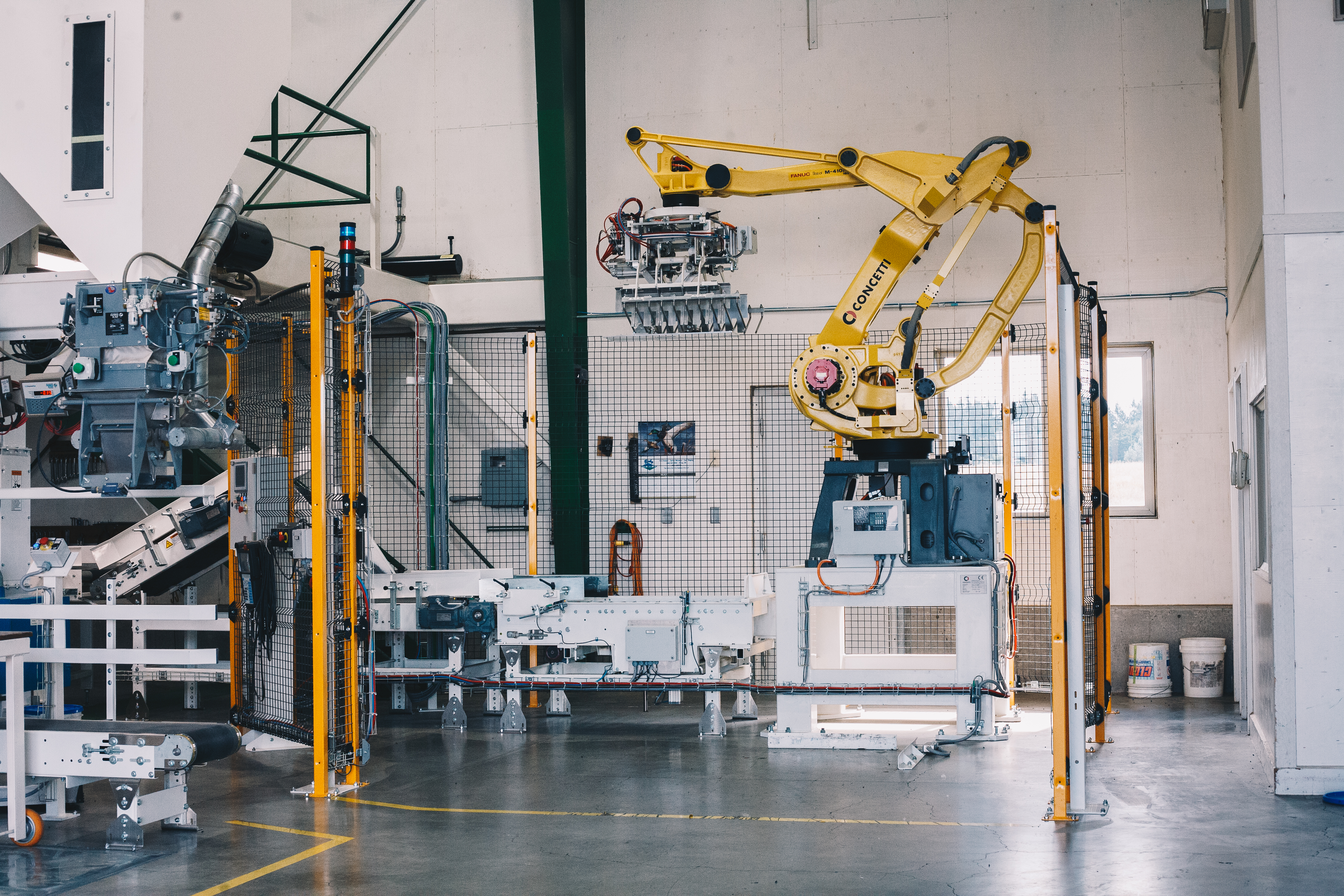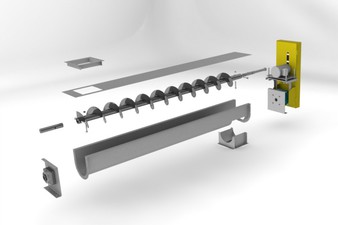
The industrial automation market is constantly growing and is expected to reach$306.2 billion by 2027. The rapid growth is a direct result of the many advantages that come with automation. As technology advances, these benefits increase alongside it. Robotic palletizers are an excellent example of an automation process that could help your business. For more information on robotic palletizers and their benefits, keep reading.
What Are Robotic Palletizers?
Automated Palletizers have been present in industrial settings for over 50 years, providing an automated method of stacking pallets. While these have several advantages, there are also some limitations. To this day it is still common for many companies to opt for manual pallet loading. In recent years, however, the option of robotic palletizers has become more widely available.Traditional palletizersgenerally orient products using a system of conveyors. Robotic Palletizers are able to stack products onto pallets, or even depalletize through a fully automated process. This is possible with the implementation of a robotic arm, rather than sliding/bumping the products on conveyors. A third version of palletizers, hybrid robotic palletizers, combines many of the advantages of both traditional layer palletizers and robotic arm palletizers while eliminating the drawbacks of each.
Advantages of Industrial Automation
Automation involves using industrial robotics, computers, and control systems to carry out industrial processes. These would traditionally be manual tasks. There are a number of common examples such as food/beverage packaging, 3D printing, production line sorting, and metal fabrication. Automation can provide many benefits to a business:
Cost reduction- There will be an initial investment, but with fewer employees, the ROI (return on investment) will soon be in the positive
Productivity- Automation can help with both administrative and physical tasks at a constant, reliable pace
Output quality- The error rate of manual processes is generally around 1 - 1.15%, but automated systems can be as low as 0.00001%
Safety- The risk of accident or injury from physical tasks is far less likely, and sensors can detect temperature spikes or other changes to protect the equipment
Accuracy- Data and information will be more precise as the risk of human error is greatly reduced
Consistency- The nature of automated systems means you can ensure the production rate and quality only change when desired
Parameter monitoring- Sensors can track time, frequency, temperature, pressure levels, acoustics, and other factors, giving alerts when there are any unexpected changes
Equipment monitoring- All equipment can be monitored to detect any issues or malfunctions, allowing quick and efficient maintenance
Improved working conditions- employees will spend far less time on repetitive, tedious tasks, freeing them up to take on more important responsibilities, or train for more complex roles, automation is also a good way to attract the next generation of plant operators.
Benefits of Robotic Palletizer
As technology advances, the benefits that come with it increase significantly. Robotic palletization, as well as other forms of automation, are becoming more common in industrial settings.
Flexibility
Robotic palletizers offer flexibility in layer patterns including the ability to overlap bags tying loads together and/or fitting larger bags within the bounds of the pallet. They are capable of sorting, rotating, and lining up products to stack them in a very specific fashion. If a pallet needs to be stacked in such a way that all products have the same side facing out, this can easily be achieved. In an agricultural engineering setting this is ideal for food products. Different products can be stacked onto the same pallet if needed. There can be a wide range of differences between production lines.Various choicesare available when considering a robotic palletizer.
Product Alteration
A change in an agricultural process design, for example, could mean the same type of product will need to be in a different packaging. For a traditional palletization system even a small change may require an overhaul of the entire system. For a robotic palletization system, the robotic arm can quite easily be reprogrammed for this change.
Affordability and Expansion
Semi-automatic robotic arms, those that stack automatically while relying on forklift operators to remove full pallets are a very economical way for plants to start with automation and increase operational efficiency. In time they can be upgraded with automated pallet dispensers, slip sheet dispensers and pallet conveyors to build out a fully automated system.
Space
Robotic systems still need conveyor belts, but typically less than traditional systems. The space used can be reduced significantly even if two palletizing stations are used for higher throughout. Saving space is a huge plus in any industrial environment.
Production Changes
Changes in bag or box sizes, products, and pallet layer patterns are easy to change. This makes them well suited for use in plants that serve markets with ever changing packaging needs. The consistency and reliability of robotic palletizers can even benefit small-scale production lines that tend to have inconsistent output with manual operation.
Safety
机器人托盘堆垛机能够移动沉重的损失ads continuously and repetitively. When loading a pallet manually employees will experience fatigue and distractions. There is also a constant risk of injury and the associated liability for a company resulting from workplace injuries.
Drawbacks of Robotic Palletizers
Despite the numerous advantages of robotic palletizers, there are always drawbacks. When making a decision it comes down to a comparison between advantages and disadvantages. Luckily, Bratney carries robotic, traditional, and hybrid robotic palletizers and our packaging division engineers will work with you to find the correct solution to match your facility, production needs, and budget. The issues below are the main concerns to factor in when looking into robotic palletization.
Initial Cost
Under most circumstances, a robotic palletizer will provide a positive ROI in as little as 12-18 months. There will, however, always be an initial capital outlay. Finance leases are available to keep your cash free for operating expenses.
Employment
The use of automation can have a negative impact on employees. A loss of jobs can occur due to machines replacing parts of a process. This does however present the option to retrain staff for other areas of work within the same business while attracting a new generation of employees interested in working with automated machines. The increased profits as a result of optimization also make it possible for companies to tackle growth opportunities.
Speed
整个过程的速度可以改变很多ending on different factors. Generally, robotic palletizers are slower than traditional ones. This, however, will rarely outweigh the flexibility and capability of a robotic palletizer.
Is It Worth It?
It is clear that under almost all circumstances the advantages outweigh the disadvantages. Bratney Companies is a leader in process engineering, with a wide range of solutions available. Whether it is robotic palletizers, traditional palletizers, hybrid robotic palletizers, or any other form of automation, we've got you covered. To find out more about what we can offer get in touch byclicking here.



